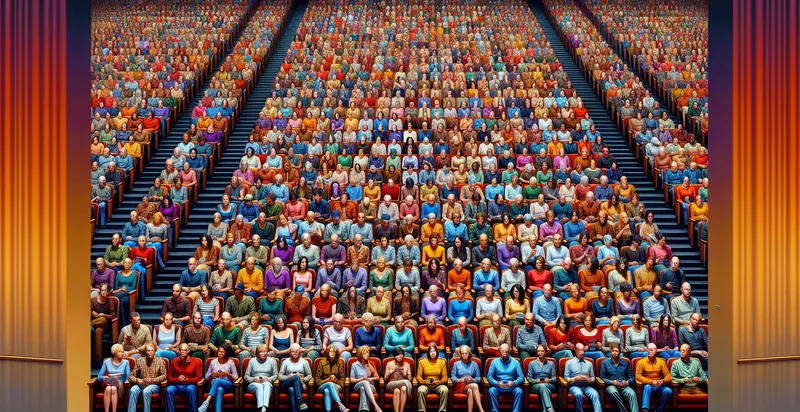Identify theater audience count
using AI
Below is a free classifier to identify theater audience count. Just upload your image, and our AI will predict the number of people in the audience - in just seconds.

Contact us for API access
Or, use Nyckel to build highly-accurate custom classifiers in just minutes. No PhD required.
Get started
import nyckel
credentials = nyckel.Credentials("YOUR_CLIENT_ID", "YOUR_CLIENT_SECRET")
nyckel.invoke("theater-audience-count", "your_image_url", credentials)
fetch('https://www.nyckel.com/v1/functions/theater-audience-count/invoke', {
method: 'POST',
headers: {
'Authorization': 'Bearer ' + 'YOUR_BEARER_TOKEN',
'Content-Type': 'application/json',
},
body: JSON.stringify(
{"data": "your_image_url"}
)
})
.then(response => response.json())
.then(data => console.log(data));
curl -X POST \
-H "Content-Type: application/json" \
-H "Authorization: Bearer YOUR_BEARER_TOKEN" \
-d '{"data": "your_image_url"}' \
https://www.nyckel.com/v1/functions/theater-audience-count/invoke
How this classifier works
To start, upload your image. Our AI tool will then predict the number of people in the audience.
This pretrained image model uses a Nyckel-created dataset and has 10 labels, including 1-5, 101-200, 11-20, 201-300, 21-30, 301-500, 31-50, 500+, 51-100 and 6-10.
We'll also show a confidence score (the higher the number, the more confident the AI model is around the number of people in the audience).
Whether you're just curious or building theater audience count detection into your application, we hope our classifier proves helpful.
Related Classifiers
Need to identify theater audience count at scale?
Get API or Zapier access to this classifier for free. It's perfect for:
- Performance Planning: The 'theater audience count' identifier can assist theater management in planning performances by providing real-time data on audience attendance. This allows managers to assess the popularity of different shows and make informed decisions regarding future bookings, marketing strategies, and staffing requirements.
- Capacity Optimization: By analyzing audience counts, theaters can optimize seating arrangements and ticket pricing models. This function enables better utilization of space, ensuring that theaters maximize revenue while maintaining a comfortable environment for attendees.
- Marketing Effectiveness: The identifier can help evaluate the success of marketing campaigns by correlating audience counts with promotional efforts. By understanding which campaigns drive higher attendance rates, theaters can refine their marketing strategies for future events.
- Event Scheduling: The audience count data can be used to determine optimal dates and times for performances. This allows theaters to schedule events based on historical attendance patterns, thereby increasing the likelihood of full houses.
- Customer Segmentation: The function can facilitate customer segmentation by analyzing audience demographics and attendance data. This information can be utilized to tailor programming and promotional efforts towards specific audience segments, enhancing customer experience and engagement.
- Safety Compliance: By accurately tracking audience numbers, theaters can ensure compliance with safety regulations and crowd control measures. The identifier helps facilities manage occupancy limits, thereby enhancing safety for both patrons and staff during events.
- Revenue Forecasting: The audience count identifier can play a crucial role in financial forecasting for theater operations. By predicting attendance trends, management can better estimate revenue, manage expenses, and make data-driven financial decisions for sustainability and growth.


